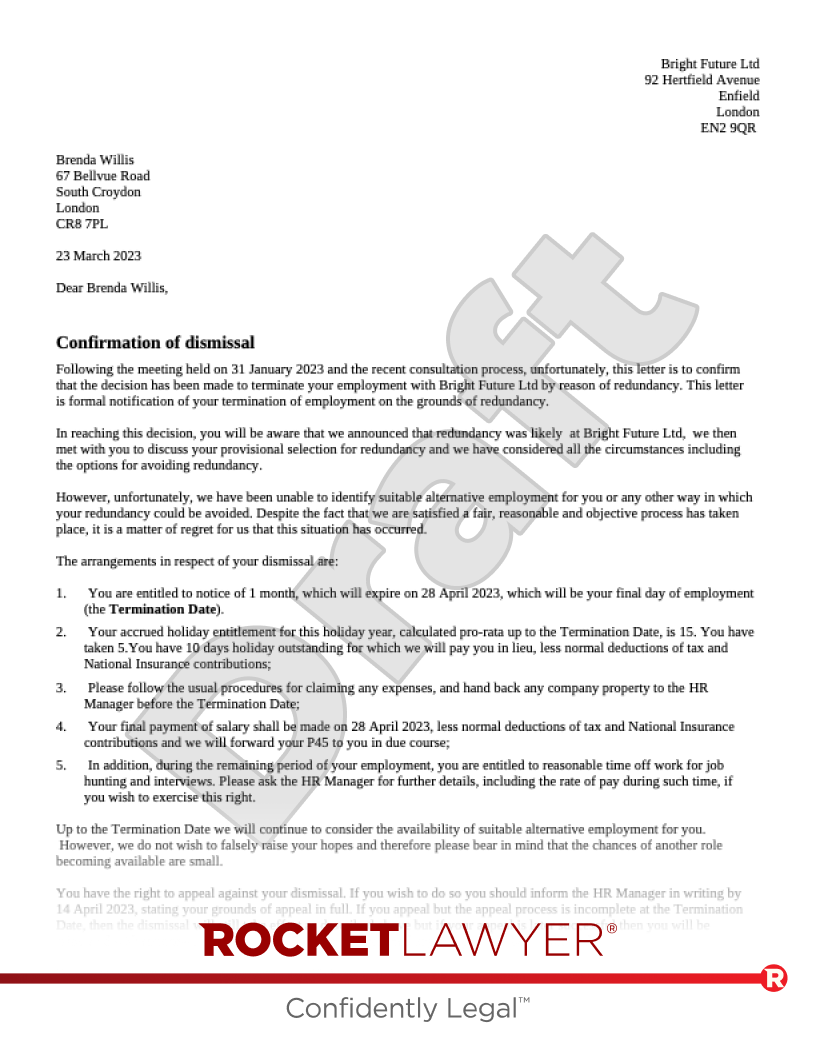Considerations when making somebody who is pregnant or on or returning from family leave redundant
There are 4 important questions that should always be asked by employers considering redundancies involving someone who is pregnant, who is on on maternity, adoption, or shared parental leave, or who has just returned from one of these types of leave:
1. Is the redundancy genuine?
It's crucial that any redundancy is made for a genuine reason (eg because the role is no longer viable due to changes in business or automation). Moreover, an employer should consider whether the redundancy genuinely needs to be made while an affected employee is on maternity, adoption, or shared parental leave, or otherwise benefitting from additional protection from redundancy due to pregnancy or family leave.
2. How do I consult employees on maternity leave?
Employers must consult with any employees before making them redundant, including those who are on maternity, adoption, or shared parental leave or who are off work due to pregnancy-related sickness. They must discuss the reasons for the proposed redundancies and any alternatives (eg alternative roles within the business).
3. How do I choose redundancy selection criteria?
Any selection criteria used to determine who is made redundant should be transparent, objective, measurable, and non-discriminatory.
If absence from work is used as a criterion, it should not take into account any absence due to pregnancy or maternity leave (this will likely constitute discrimination).
For more information, read Redundancy pooling and selection.
4. Is there a suitable alternative?
This is where enhanced redundancy protections are a vital consideration. If there are alternative jobs available that could be suitable for employees selected for redundancy, employees with enhanced redundancy protection must be offered these vacancies first.
What is enhanced redundancy protection?
Enhanced redundancy protection is the additional protection that certain employees receive in relation to redundancy. If an employee is entitled to enhanced redundancy protection and is unable to continue in their old job due to redundancy, they must, by law, be offered suitable alternative employment in a suitable vacancy within the employer’s business ahead of any other employees who have also been selected for redundancy.
This is a rare example of 'positive discrimination' being mandatory. Failure to comply with this rule will leave an employer open to claims for automatic unfair dismissal.
A suitable vacancy in relation to this right is one that:
-
is available within the employer’s business (or the business of any successor of it or an associated employer) - either once the employee is due to return to work; or before this time but after the employee’s redundancy has been established
-
is suitable for the employee based on their personal circumstances and work experience, and
-
Is offered on terms that are not substantially less favourable than the terms of the role that the employee previously held
Who is entitled to enhanced redundancy protection?
Enhanced redundancy protection is available to an employee:
-
during pregnancy (ie from the date on which they inform the employer of their pregnancy until they start statutory maternity leave or, if they’re not entitled to such, at the end of the 2 week period following the pregnancy) - only applicable when the employee informs the employer of their pregnancy on or after 6 April 2024
-
during statutory maternity leave
-
after maternity leave has ended (ie from the day after statutory maternity leave ends until the end of 18 months following either the expected week of childbirth or, if notified to the employer, the child’s date of birth - only applicable when the employee informs the employer of their pregnancy on or after 6 April 2024
-
during statutory adoption leave
-
after adoption leave has ended (ie from the day after statutory adoption leave ends until the the end of 18 months after the day on which the child was placed with the employee for adoption) - only applicable when the employee’s statutory adoption leave ends on or before 6 April 2024
-
during shared parental leave
-
after shared parental leave if the employee has not also taken maternity or adoption leave (in which case they will be protected in relation to that leave) and has taken at least 6 consecutive weeks of shared parental leave. In this case, they’re protected from the day after the end of the 6 consecutive weeks of shared parental leave that they’ve taken until the end of 18 months after the day on which the child was placed with the employee for adoption or, if not adopted, the day on which the child was born - only applicable when the employee’s 6 consecutive weeks of shared parental leave started on or after 6 April 2024
Is an employee who’s made redundant entitled to statutory maternity pay?
Pregnant employees who are made redundant before the beginning of the 15th week before the baby is due (ie the qualifying week) are not entitled to Statutory Maternity Pay (SMP), but may be able to claim Maternity Allowance instead.
Those made redundant after the qualifying week are entitled to SMP in addition to any relevant redundancy payment.
Can maternity pay be set against notice pay?
If an employee is dismissed and is entitled to notice pay (ie to a paid notice period), their employer can offset their maternity pay against the notice pay for any week of the employee's notice period where they would be getting maternity pay.
For example, if an employee was dismissed for redundancy 2 weeks before the employee's SMP ran out and the employer must give 4 weeks' notice: the employee would receive 2 weeks of SMP plus the difference between SMP and normal pay; and 2 weeks of normal pay. In effect, the employee would be paid for 4 weeks' normal pay, but this amount would include the 2 weeks’ SMP.




